B2B case studies don’t have to be dull. However, they’re often a snoozefest. The biggest problem? They have no emotional pull. Think facts, dry statistics and boring technical details. In other words, there’s no hook to draw readers in. They should take a cue from consumer brands.
Consumer brands sell through emotion and stories. They tap into feelings by sharing human struggles, breakthroughs and memorable moments. In short, consumer brands go beyond stats and return on investment to create emotional connections.
In this post, I’ll share strategies you can steal from consumer brands to take your B2B case studies from blah to blockbuster.
Make your audience feel something
When was the last time you read a B2B case study that inspired you or made you curious? Consumer brands leave B2B in the dust because they excel at storytelling. Instead of focusing on products, they tap hearts and minds. They show us who we could become and what we could achieve. In addition, they make us believe it’s possible.
For example, consider Ben & Jerry’s fight for social justice or Bombas building a business around donating socks to homeless shelters. These aren’t marketing gimmicks. On the contrary, they’re authentic stands that appeal to their consumers. While B2B brands obsess over features and specs, consumer brands focus on the journey, the challenges and the triumphs. As a result, they make us root for the heroes. In B2B, your customers are the heroes, too.
Put people first
Most importantly, start with the people behind the purchase. Every B2B solution solves problems for people. For example, your artificial intelligence (AI) platform might help a medical device company restore movement to paralyzed patients. Or your service helped a new CEO sleep better than ever. That’s your story’s hook – human struggles and wins. Consumer brands succeed because they set up problems and let people feel the pain. Even in B2B, emotion drives decisions.
Share the details
Numbers tell, but details sell. For this reason, a consumer brand wouldn’t say, “80% of our shoes are made for long-distance running.” However, the brand would describe a marathon runner’s training for a race in Death Valley, his experience the day of the event, and the difference the shoes made. Similarly, your B2B case studies need that level of detail.
In the same vein, don’t say your product “improved efficiency.” Share the story of the plant manager who finally made it to her kid’s baseball games because she wasn’t stuck troubleshooting equipment failures every weekend. Likewise, describe the chief financial officer’s reaction when he saw the cost savings in real time. In turn, details like these make your case studies real and relatable.
Keep the stakes real
If you’re thinking your business doesn’t have success stories like these, don’t be discouraged. B2B wins don’t need to be made-for-TV moments. Instead, focus on the small, meaningful victories. As an example, maybe your logistics upgrade meant a warehouse team got home in time for dinner instead of staying late again.
In another possible scenario, a streamlined approval process finally let a purchasing director take that two-week vacation she’d been putting off for years. Or a sustainability team hit its long-awaited zero-waste milestone after more than a year of effort. Ultimately, these everyday moments are where the real power lies. The key is to hook your audience right away by highlighting:
- Triumphs
- Personal and organizational challenges
- Crises
- Unexpected obstacles overcome
- Improvements to daily work life
- Cultural or operational transformations
5 consumer brand examples you’ll want to steal
Let’s look at how top consumer brands turn everyday stories into emotional gold and what you can steal from them for your B2B case studies:
Bose
Bose specializes in high-end audio equipment that “looks good” and “sounds amazing.” The company sells how it feels to live in a world tuned to your preferences.
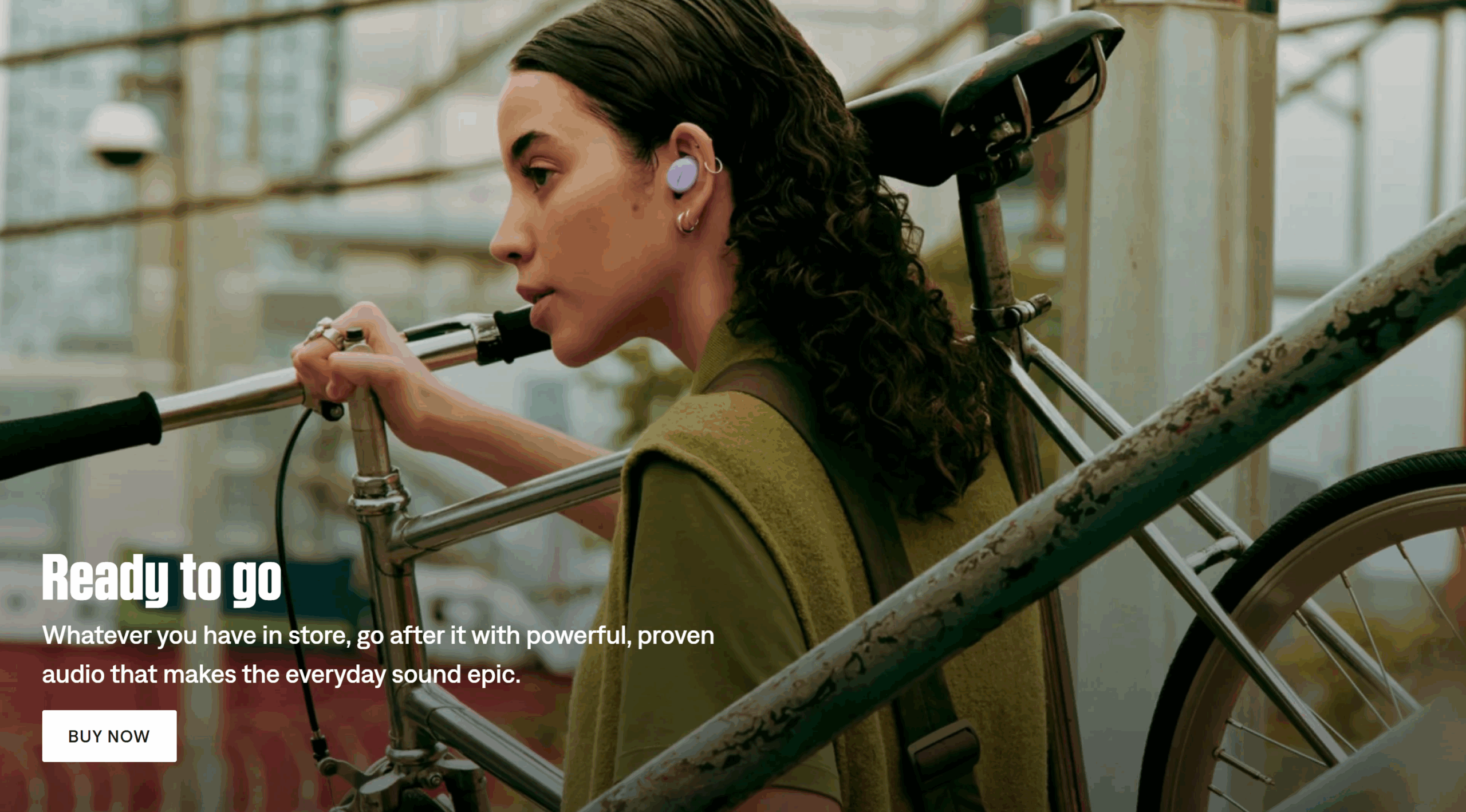
What Bose crushes:
- Experiential outcomes: The company emphasizes personal, experiential outcomes, such as tranquility, focus and immersion, rather than technical details.
- Lifestyle positioning: Bose frames its products as essential tools for better living while working, traveling or unwinding.
- Subtle luxury cues: From its photography to its product names, Bose balances accessibility with a premium feel. It whispers luxury, which makes the brand feel aspirational without being out of reach.
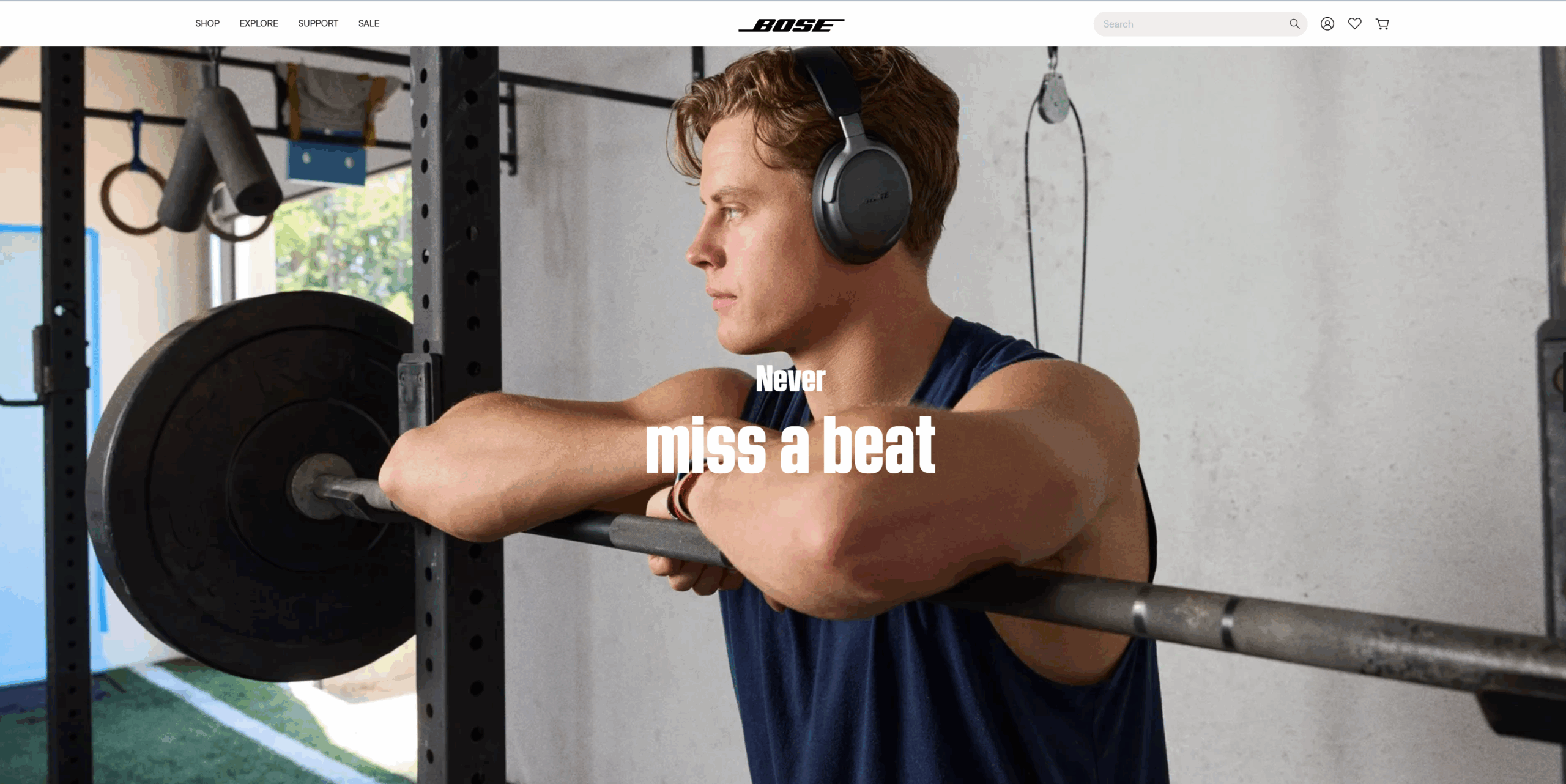
What to steal from Bose: Sell clarity, not complexity
- Sell the absence of chaos: Your clients purchase more than your products and services: they buy their way out of problems. Frame your case studies around the removal of friction. For example, instead of “Our service desk platform helped a tech company resolve tickets faster,” try this: “A tech company replaced IT fire drills with focused, self-service simplicity.” Paint the picture of what daily chaos looked like – ping-ponging tickets, burnout and constant interruptions – and how you built a system that works – without the drama.
- Focus on feelings: Show what your customers’ outcomes feel like for the people living them. Does your security service let IT teams sleep soundly – no more 2 a.m. alert jolts? Translate results into emotional payoffs your audience can relate to.
CandaScent Labs
Who needs another candle or diffuser when you can get “olfactory wellness?” That’s what CandaScent Labs sells.
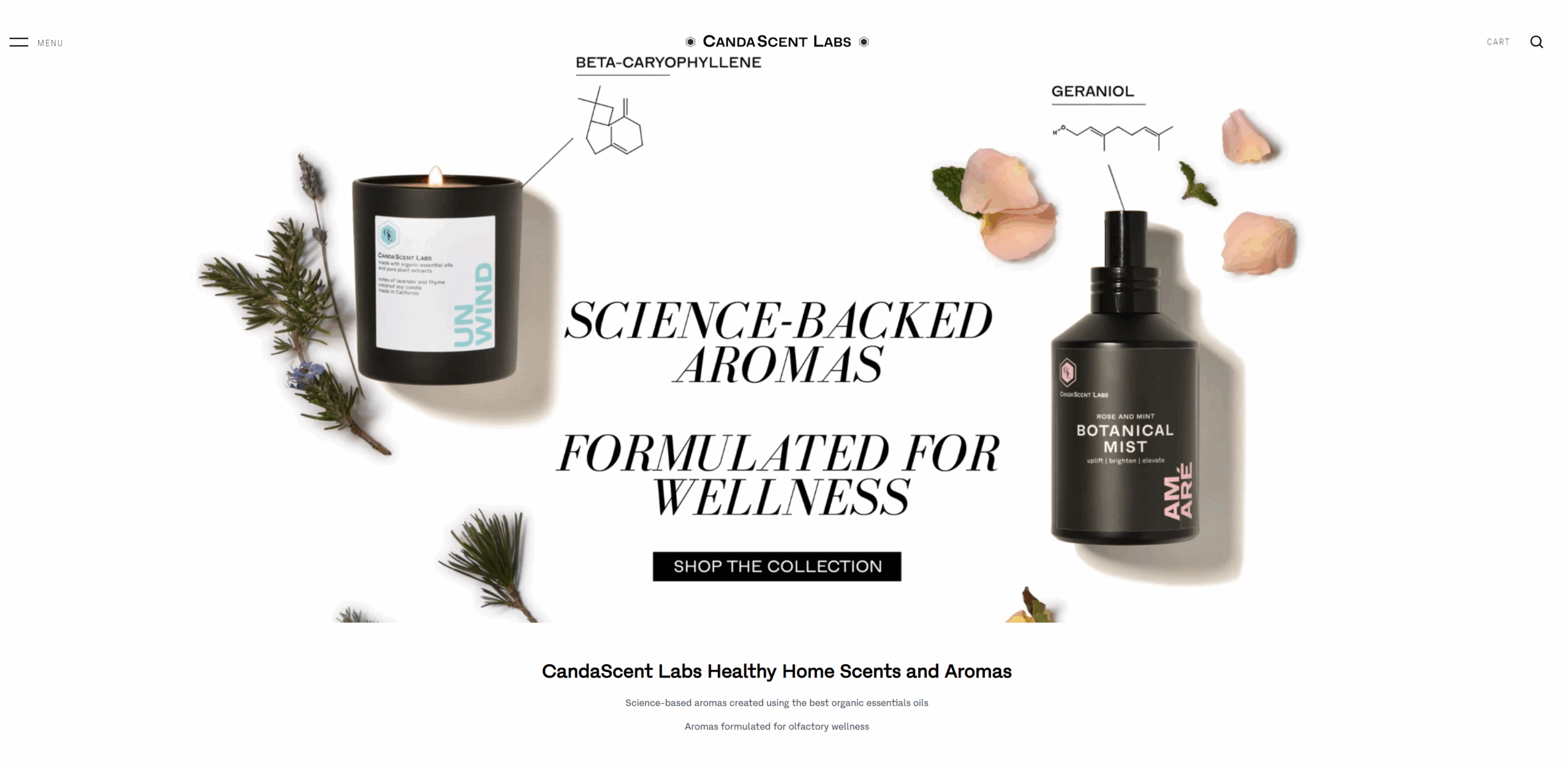
What CandaScent crushes:
- The big idea: The company’s core concept is using scent to improve health and well-being versus merely making your home smell good. This elevates the brand from a home fragrance company to a wellness innovator with a purpose.
- Informative and passionate: CandaScent’s brand voice is sophisticated, educational and passionate. Phrases like “Your wellness is our passion” and unlocking the “therapeutic benefits of nature” create an emotional connection and establish the company as mission-driven.
- Science-backed content: The brand promotes the science behind its scents. By explaining the olfactory system and the roles of specific ingredients, CandaScent builds trust and positions itself as a wellness expert.
- Transparency: CandaScent is explicit about its ingredients: “100% plant derived,” “organically grown,” “sustainably sourced” and free from harmful chemicals. In addition, the company highlights its lab testing and safety practices. This transparency addresses potential customer concerns head-on.

What to steal from CandaScent Labs: Connect small wins to a bigger mission
- Reveal the big picture: Tactical wins are great, but case studies should connect those wins to something bigger. Like CandaScent Labs reframing scent as a tool for wellness, your case studies should spotlight how your products and services support business transformation. For example, instead of writing about “How Company A Streamlined Procurement With Our Platform,” try “How Company A Took the Chaos Out of Procurement and Found $18M in Hidden Savings.”
- Highlight the “why”: CandaScent Labs leads with why its products matter: to support well-being through scent. For your case studies, focus on the reasons for your customers’ projects. What’s driving your customers’ decisions? What pain points are they trying to solve?
- Explain the “how”: Impressive results aren’t enough. Bring your audience into the journey: the collaboration, trade-offs, milestones and decisions that made the outcomes possible. Detail how you got there, including your strategies and processes.
- Lead with heart and brains: Write your case studies with a strong, confident and passionate voice. You should sound like an expert who cares about your customers’ success.
- Showcase your “ingredients”: What tools, platforms and technologies do you use to help your customers? Who are the team members who work on these projects and what are their roles? Share their expertise and contributions. These details will elevate your case studies from simple proof points to compelling stories that educate, build trust and inspire action.
Liquid Death
Liquid Death sells canned water, but it’s more about attitude than a beverage. Sharp humor and visual storytelling elevate the brand in a highly competitive market.
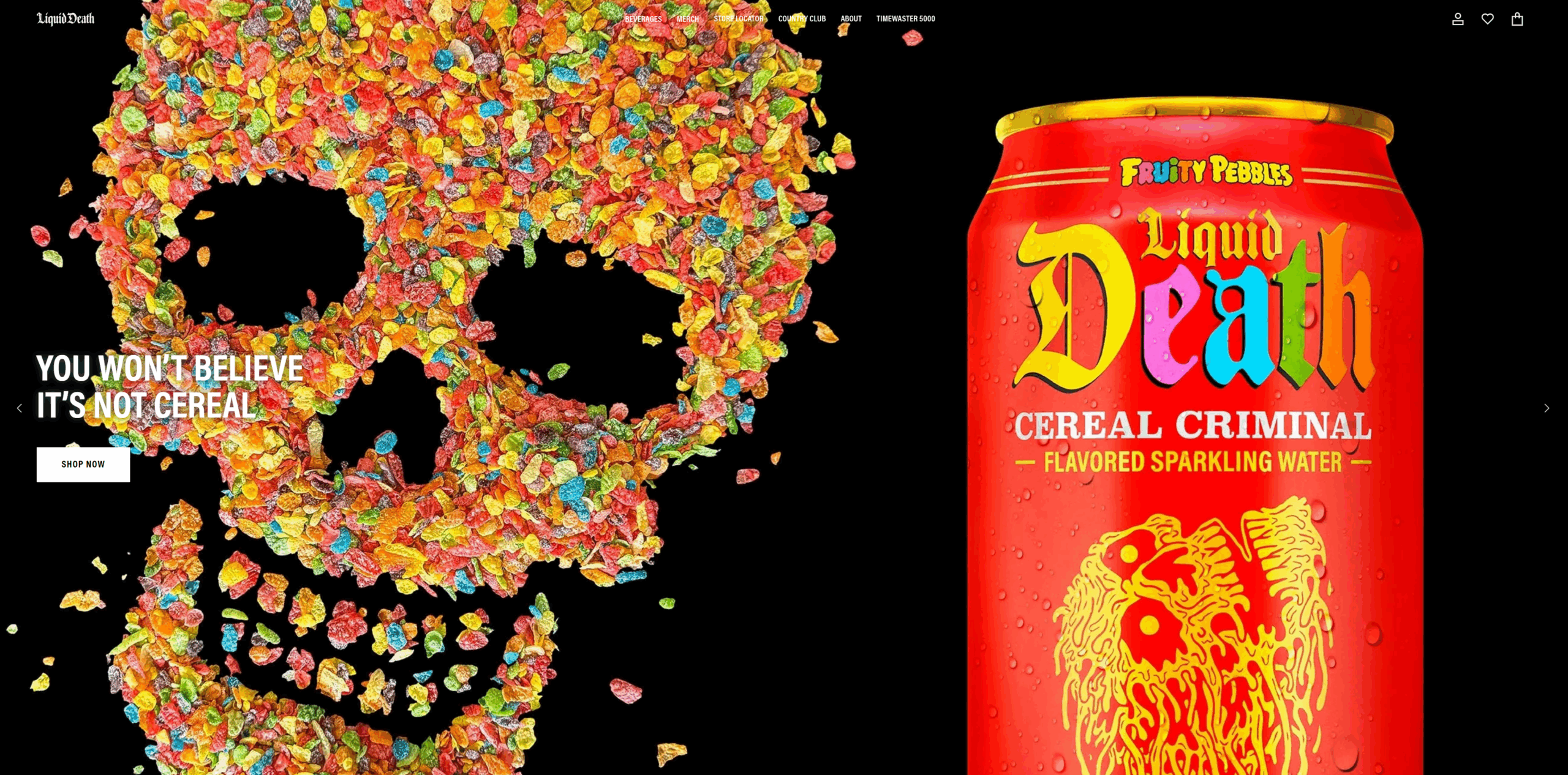
What Liquid Death crushes:
- Humor and shock value: The brand stays away from traditional marketing. Not only that, but it has fun with messaging like “murder your thirst” and “instant death.” It transforms the mundane into the absurd, proving that marketing can entertain. Check out Liquid Death’s Timewaster 5000 to see how personality, tone and creative fiction can make even the driest touchpoints unforgettable.
- Environmental responsibility content: Brands that boldly share their mission and values – meaning they stand for something tangible – engage people. Instead of sharing dry statistics, Liquid Death makes “Death to Plastic” a movement. Your sustainability wins can be equally compelling.
- Lifestyle-driven loyalty: The brand goes beyond making beverages by offering community. Cult-favorite merch and Liquid Death’s “Country Club” make customers feel like insiders.

What to steal from Liquid Death: Own your weird
- Tell the human story: Go beyond metrics and results. How do your products and services make your customers’ work lives better, easier or more enjoyable than before they found your brand? Do your solutions change the way your customers work, communicate or think?
- Own your personality: Liquid Death embraces a rebellious, edgy vibe that’s compelling and smart in a crowded beverage market. Its this differentiation that makes the brand memorable.
- Embrace the unexpected: Product names like “Cereal Criminal,” “Doctor Death” and “Mango Chainsaw” are wild – and that’s why they work. Think about how you can inject humor, personality or a unique hook into your case study headlines and narratives. Can you share an unconventional success story?
- Stand for something: What’s your brand’s purpose? How do your products and services contribute to positive change? People increasingly support brands that align with their values and demonstrate social responsibility. Weave your mission and purpose into your customer stories.
- Build community: Frame case studies as partnerships rather than transactions. Highlight moments of collaboration, trust and progress. Share stories of people working together – not delivering services.
Quince
Quince is a direct-to-consumer (D2C) brand that sells clothing and home goods, emphasizing affordable luxury and sustainable practices.
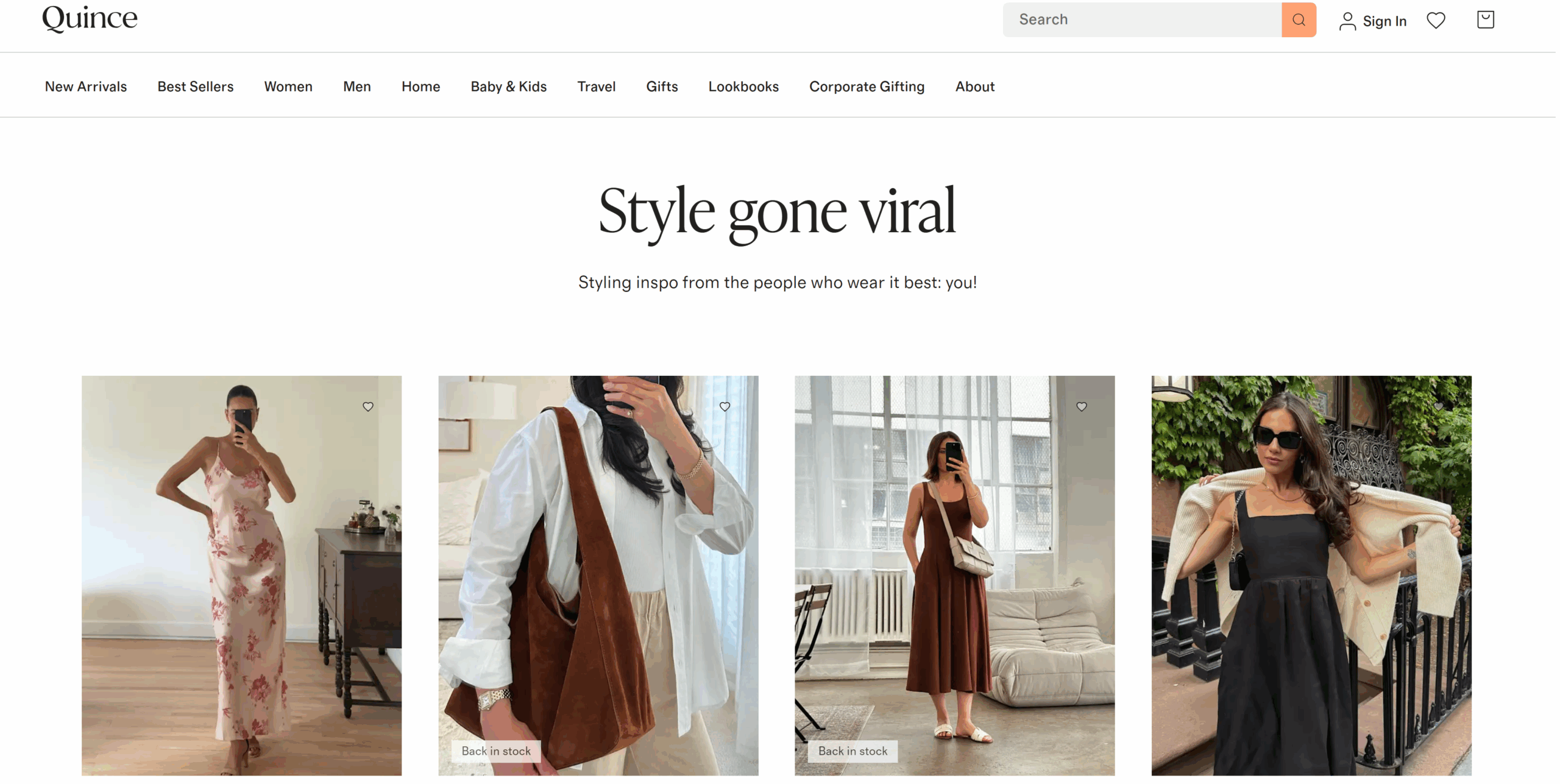
What Quince crushes:
- Clear value: Quince leads with a strong customer benefit: “Luxury essentials, honestly priced.” That sharp focus says it all.
- Transparency: The brand highlights the “how” behind its low prices to build trust and make customers feel like they’re getting excellent deals.
- Ethical narrative: Quince focuses on sustainability, supply chain ethics and social benefits. Its messaging positions the brand’s products as high-quality and affordable without the traditional retail markup.
- Customer-centric: Quince’s 365-day free return policy is a huge differentiator. It instills consumer confidence in the brand’s products and quality.
- Modular storytelling format: The brand’s product pages include bite-sized sections for benefits, materials, customer reviews, comparisons and other content.
- Educational content: Quince helps consumers make informed choices with helpful guides, such as those about cashmere and silk.
- Smart social proof: The company highlights thousands of reviews with clear star ratings and verbatim customer quotes to build trust quickly.
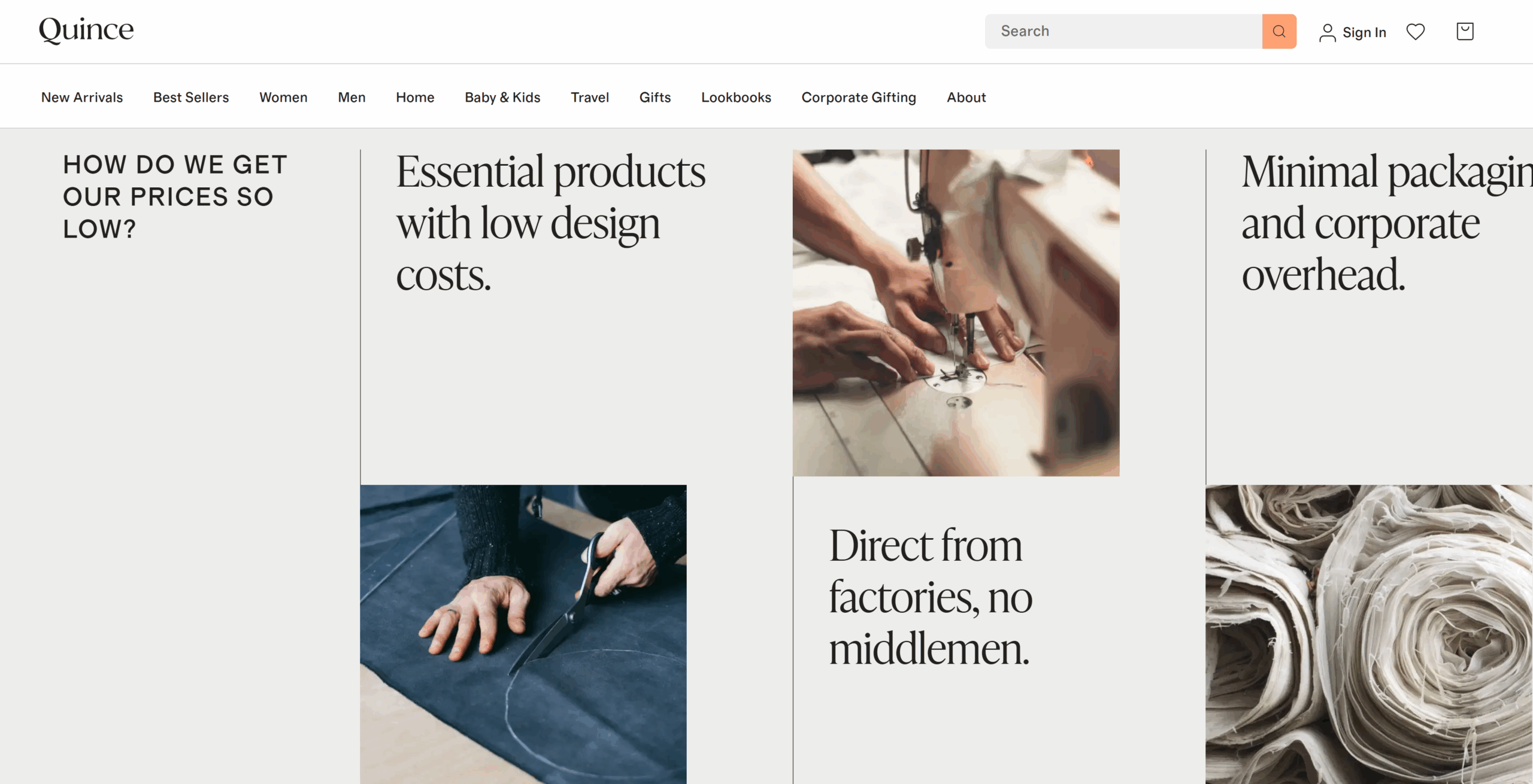
What to steal from Quince: Turn everyday value into trust
- Go beyond return on investment: Share stories about the full value your products and services provide. That includes:
- Operational wins such as reduced downtime, fewer bottlenecks and streamlined workflows
- Strategic gains such as market expansion, rapid decision-making and future scalability
- Risk mitigation wins such as reduced exposure to data breaches or regulatory penalties
- Customer-centric wins such as improved customer satisfaction, retention or onboarding speed
- Soft wins like boosted morale, improved team alignment or reclaimed time for high-value work
These outcomes might not show up on a spreadsheet, but they shape how your customers operate every day.
- Be transparent about the “how”: Give a peek behind the curtain. Explain the steps you took, who was involved and how your team and your customers made decisions along the way. Furthermore, acknowledge challenges. No project is perfect. Real-world context builds credibility and helps buyers imagine what working with you looks like. It also showcases your team’s problem-solving skills.
- Lean into value-led storytelling: If your projects have purpose-driven outcomes, weave those into your narratives.
- Include customer testimonials: This adds a layer of authenticity and credibility.
- Highlight your support and partnership: What does going above and beyond look like for your team? Whether it’s hands-on training, tailored support or proactive guidance, these touches signal your long-term commitment. Think of it as your version of a white-glove return policy. It shows you’re invested in your customers’ success.
- Make your case studies skimmable: Break your content into chunks so that readers can jump to what they’re most interested in.
- Create supplemental educational content: For example, include links to “how-to” mini-guides, implementation checklists, frequently asked questions or explainer videos that help readers learn more. This positions your brand as a helpful expert.
Zenni Optical
Zenni Optical is a D2C eyewear brand known for radically affordable prescription glasses.
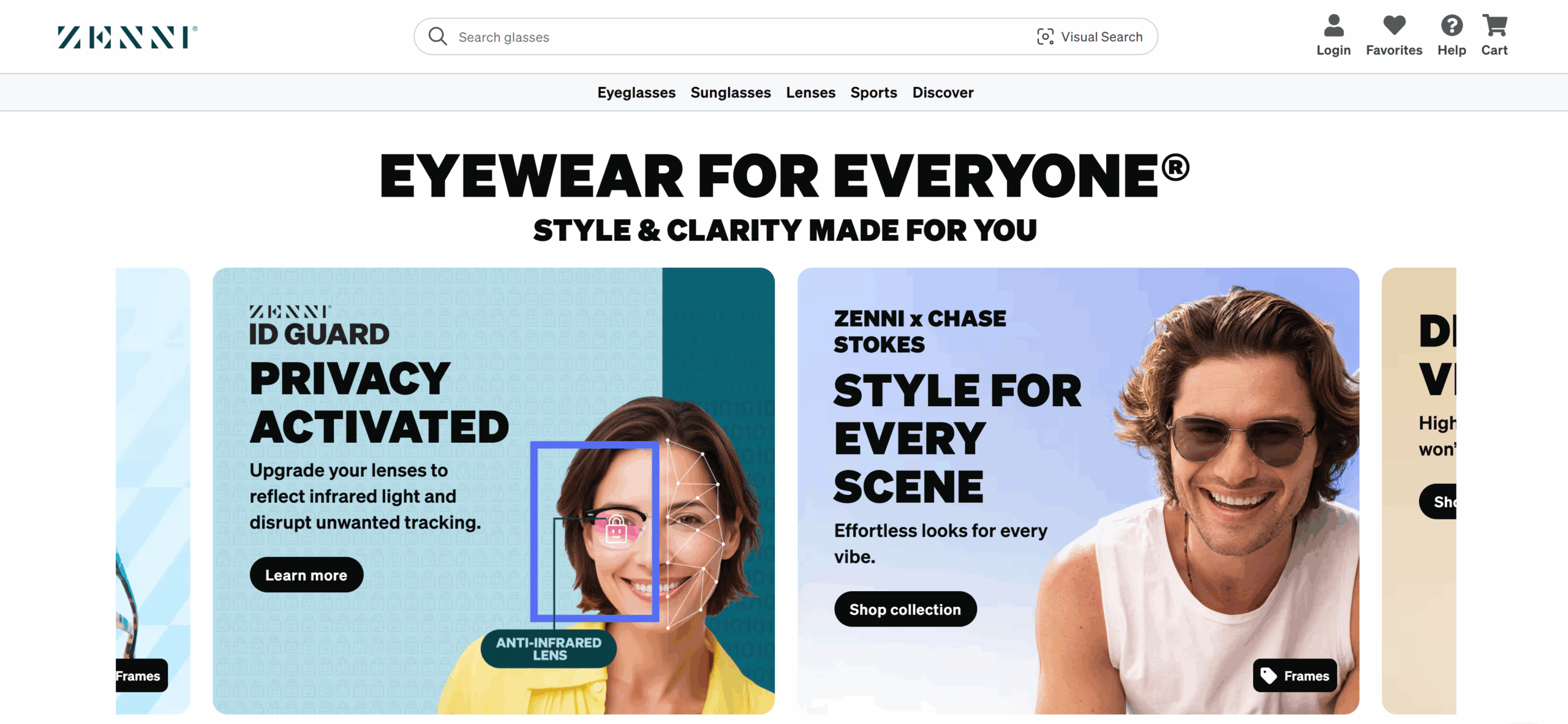
What Zenni crushes:
- Value-focused: Zenni leads with a clear, compelling offer: stylish “Eyewear for Everyone” starting at $6.95. Price is the clear winner with multiple wallet-friendly categories.
- Bold brand personality: Zenni makes shopping for glasses fun with playful copy, colorful visuals and a quirky, confident tone. The company markets glasses as something you want to wear rather than a must-have.
- Clear product positioning: Shoppers can find the right options fast, with clear messaging tailored to different audiences – from parents to professionals to fashion lovers.
- Interactive tools: From virtual try-ons to frame matching and easy prescription entry, the brand helps consumers make confident purchases without going to physical stores.
- Educational content: Detailed guides about lens types, face shapes, how to read prescriptions, adjust glasses, and more help consumers choose the right pair without second-guessing.
- User-generated content: Zenni’s site is loaded with customer-provided photos and verified reviews, emphasizing brand trust and credibility.

What to steal from Zenni Optical: Make simplicity your superpower
- Grab them fast: Put your biggest win or boldest benefit right at the top – and make it easy for your audience to remember. Don’t make readers dig for the good stuff.
- Bring your story to life: Don’t just say how you help customers – show what’s it like. Give your audience a feel for the process through relatable details and clear, visual storytelling.
- Demystify complex processes: Break down technical aspects of your products and services into digestible pieces. Show how you simplify complicated or expensive processes.
- Build confidence through education: Link to supplemental content that helps your audience understand your solutions and industry issues. Examples include your content hub, interactive demos, explainer videos and glossaries. This positions you as a trusted resource for current and prospective customers.
- Use social proof: Don’t just drop in a customer testimonial and call it a day. Include context, outcomes and before-and-after comparisons to help buyers see what success would look like for them.
Human first, business second
In conclusion, the best B2B case studies don’t feel like case studies at all – they feel like stories worth reading. Consumer brands nail storytelling by focusing on people, emotions and clear benefits. You can do the same. Lead with human struggles and victories. Similarly, share specific details that bring your successes to life. Most importantly, make your audience feel something.

